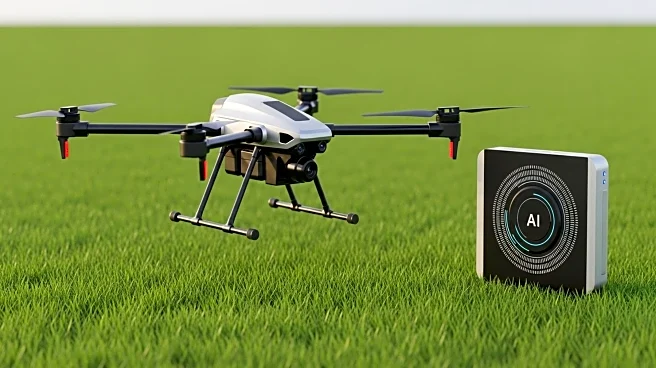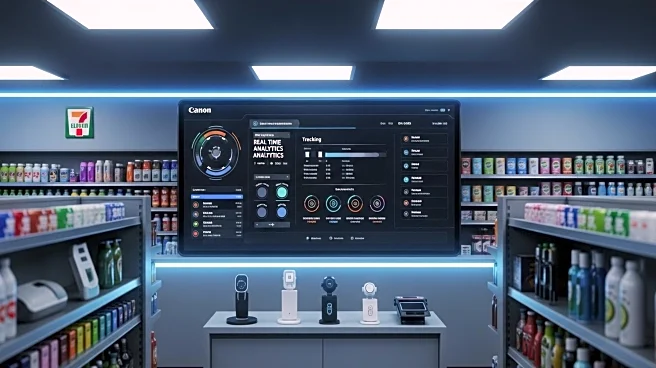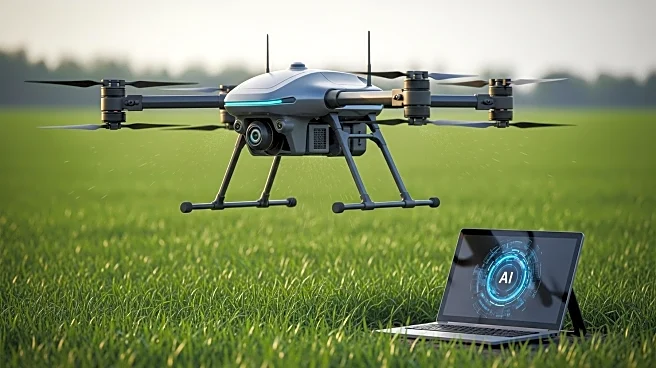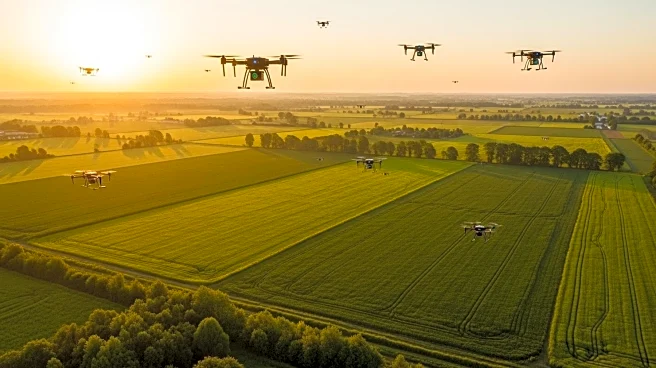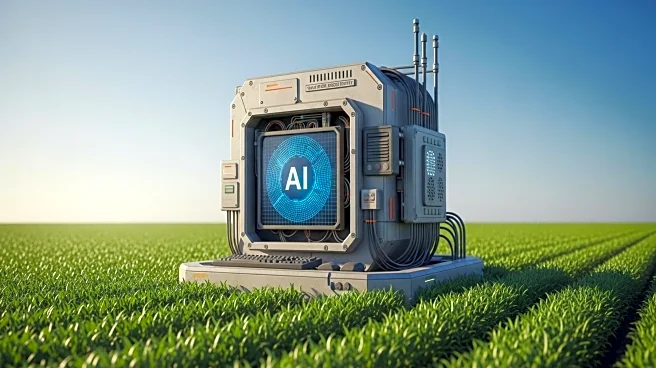What is the story about?
What's Happening?
NEXCOM has launched the ATC 3561-NA4C, an Edge AI computer designed to enhance agricultural automation. This device is equipped with NVIDIA Jetson Orin Nano SOM, providing up to 67 TOPS of AI inference performance. It supports various interfaces such as GbE PoE ports for IP cameras and LiDAR sensors, CAN bus, RS-232, digital I/O, and OTG interfaces. Connectivity options include GNSS, 5G NR, and Wi-Fi 5/6, enabling real-time AI model updates in the field. The system operates on NEXCOM’s Acceleration Linux with NVIDIA JetPack 6.2 and meets MIL-STD-810H standards for shock, vibration, and temperature tolerance.
Why It's Important?
The introduction of this Edge AI computer by NEXCOM represents a significant advancement in agricultural technology, potentially transforming farming practices. By automating tasks such as planting, weeding, crop care, and harvesting, the device could increase efficiency and reduce labor costs in agriculture. The real-time connectivity and AI capabilities allow for more precise and timely interventions, which can lead to improved crop yields and resource management. This development is crucial for the agricultural sector as it faces challenges such as labor shortages and the need for sustainable practices.
What's Next?
The deployment of NEXCOM's Edge AI computer in agriculture may lead to broader adoption of AI-driven technologies in farming. As farmers and agricultural companies integrate these systems, there could be increased demand for compatible devices and software solutions. Stakeholders in the agricultural industry might explore partnerships with tech companies to further enhance automation capabilities. Additionally, there may be regulatory considerations regarding the use of AI in agriculture, prompting discussions on standards and best practices.
Beyond the Headlines
The integration of AI in agriculture raises ethical and cultural questions about the future of farming. While automation can lead to increased efficiency, it may also impact traditional farming practices and the livelihoods of farm workers. There is a need to balance technological advancement with the preservation of rural communities and their way of life. Furthermore, the environmental impact of increased technology use in agriculture, such as energy consumption and electronic waste, should be considered.
AI Generated Content
Do you find this article useful?
